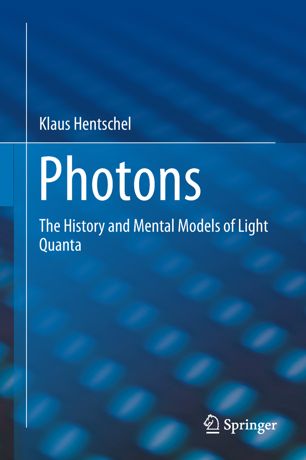

Most ebook files are in PDF format, so you can easily read them using various software such as Foxit Reader or directly on the Google Chrome browser.
Some ebook files are released by publishers in other formats such as .awz, .mobi, .epub, .fb2, etc. You may need to install specific software to read these formats on mobile/PC, such as Calibre.
Please read the tutorial at this link: https://ebookbell.com/faq
We offer FREE conversion to the popular formats you request; however, this may take some time. Therefore, right after payment, please email us, and we will try to provide the service as quickly as possible.
For some exceptional file formats or broken links (if any), please refrain from opening any disputes. Instead, email us first, and we will try to assist within a maximum of 6 hours.
EbookBell Team

0.0
0 reviewsThis book focuses on the gradual formation of the concept of ‘light quanta’ or ‘photons’, as they have usually been called in English since 1926. The great number of synonyms that have been used by physicists to denote this concept indicates that there are many different mental models of what ‘light quanta’ are: simply finite, ‘quantized packages of energy’ or ‘bullets of light’? ‘Atoms of light’ or ‘molecules of light’? ‘Light corpuscles’ or ‘quantized waves’? Singularities of the field or spatially extended structures able to interfere? ‘Photons’ in G.N. Lewis’s sense, or as defined by QED, i.e. virtual exchange particles transmitting the electromagnetic force?
The term ‘light quantum’ made its first appearance in Albert Einstein’s 1905 paper on a “heuristic point of view” to cope with the photoelectric effect and other forms of interaction of light and matter, but the mental model associated with it has a rich history both before and after 1905. Some of its semantic layers go as far back as Newton and Kepler, some are only fully expressed several decades later, while others initially increased in importance then diminished and finally vanished. In conjunction with these various terms, several mental models of light quanta were developed—six of them are explored more closely in this book. It discusses two historiographic approaches to the problem of concept formation: (a) the author’s own model of conceptual development as a series of semantic accretions and (b) Mark Turner’s model of ‘conceptual blending’. Both of these models are shown to be useful and should be explored further.
This is the first historiographically sophisticated history of the fully fledged concept and all of its twelve semantic layers. It systematically combines the history of science with the history of terms and a philosophically inspired history of ideas in conjunction with insights from cognitive science.